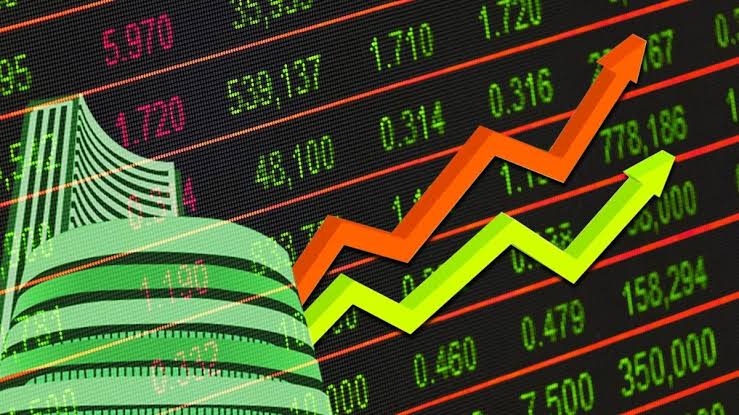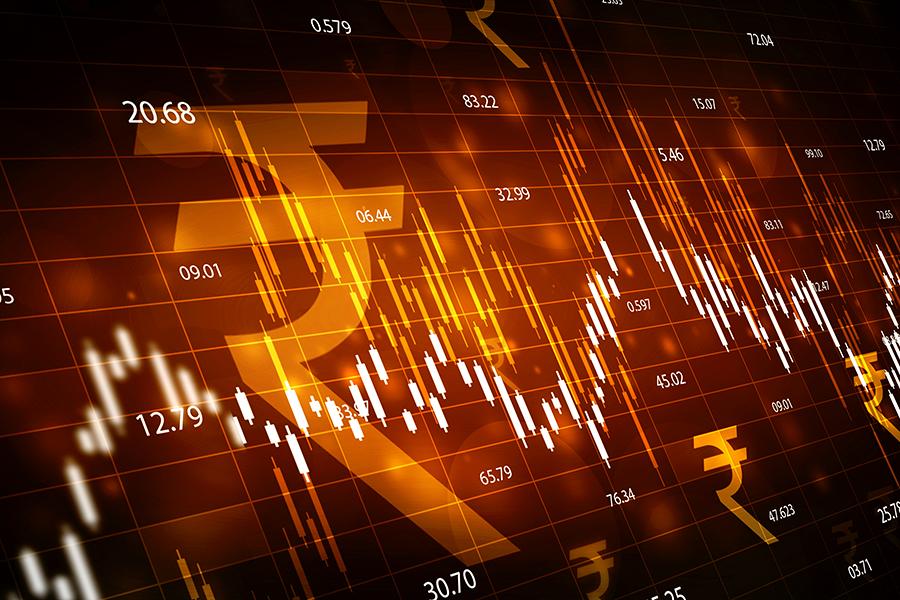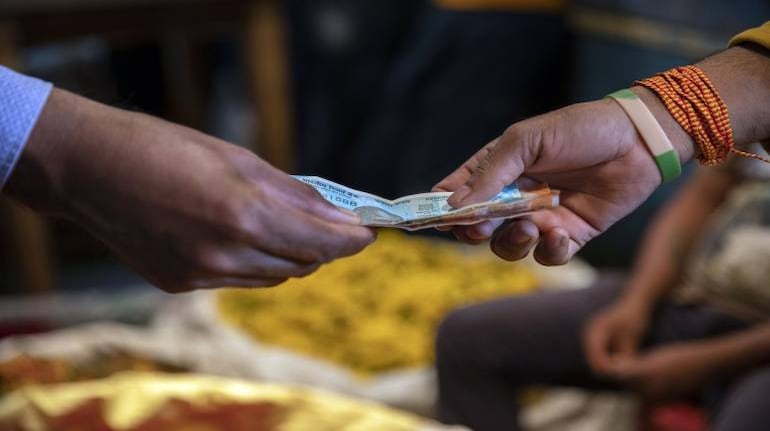How Wall Street’s Shift In Focus From China To India Has Changed The Game For Years To Come; A Shiner Prospect For India
In what is a promising outlook for India in the arena of global investment, Wall Street giants are redirecting their focus from China's faltering economy to the flourishing opportunities in India. The historic shift is significant as it marks a departure from decades of betting on China's growth story and outlines the growing appeal of India as the prime destination for investors seeking long-term returns. With billions of dollars in capital now flowing towards India, fueled by endorsements from major financial institutions and a favorable outlook on the nation's economic trajectory, a new chapter in investment strategies is unfolding, redefining the contours of international capital flows and market prominence.

The India of yesteryears stands in sharp contrast to the India of today.
In a twist, while historically trailing behind its Eastern counterpart, China, India now finds itself rapidly closing the gap, marking a significant shift in global economics and investment dynamics.
What was once perceived as a land of economic challenges and stagnation has emerged as a resilient powerhouse, defying global economic downturns with its buoyant spirit.
Amidst global economic turbulence, India’s economy stands steadfast, its stock markets exhibit remarkable buoyancy, and its growth trajectory paints a picture of promise and potential.
The New Alignment
Hence, in a significant shift within global markets, investors are now redirecting billions of dollars away from China’s slowing economy, marking a departure from their previous two-decade-long bet on China as the premier growth story worldwide.
Much of this capital is now flowing towards India, with major players on Wall Street such as Goldman Sachs Group Inc. and Morgan Stanley backing India as the top investment destination for the next ten years.
Hence, this surge of interest is sparking a frenzied rush for opportunities.
Marshall Wace, a hedge fund managing $62 billion, has positioned India as its largest net long bet after the United States in its primary hedge fund.
Vontobel Holding AG’s branch in Zurich has elevated India to its foremost holding in emerging markets, and Janus Henderson Group Plc is considering acquisitions of fund houses.
Even conservative retail investors in Japan, known for their cautious approach, are increasingly favouring India while reducing their exposure to China.

The Short Story
Investors are closely monitoring the diverging paths of two major Asian powers.
India, boasting the title of the world’s fastest-growing major economy, has significantly expanded its infrastructure under Prime Minister Narendra Modi, aiming to attract global capital and divert supply chains away from Beijing.
On the other hand, China is grappling with persistent economic challenges and widening discord with the Western-led global order.
Vikas Pershad, Asian equities portfolio manager at M&G Investments in Singapore, remarked, “People are interested in India for several reasons — one is simply it’s not China. There’s a genuine long-term growth story here.”
The Same Emerging Picture
Though optimism about India’s prospects is not new, investors now perceive a market reminiscent of China’s earlier days: a vast, dynamic economy opening up to global investment in unprecedented ways.
Although challenges persist, for example —India’s population remains predominantly low-income, stock markets are pricey, and bond markets are inward-looking—still, many investors are making the leap, wagering that potential rewards outweigh the risks of betting against India.
Historical data indicates a close correlation between India’s economic expansion and the growth of its stock market.
Still, if the nation maintains a 7% growth rate, the market size can be expected to increase by at least that rate on average. Over the past twenty years, gross domestic product and market capitalization have risen in tandem from $500 billion to $3.5 trillion.
Betting Where The Money Is
Capital movements vividly reflect this enthusiasm.
Within the US exchange-traded fund market, the primary fund investing in Indian stocks witnessed record inflows during the final quarter of 2023, whereas the cumulative outflows from the four largest China-focused funds amounted to nearly $800 million.
According to EPFR data, active bond funds have allocated 50 cents into India for every dollar withdrawn from China since 2022.
In mid-January, India briefly surpassed Hong Kong to claim the title of the world’s fourth-largest equity market, and for some investors, this ascent is only the beginning.
Morgan Stanley projects that India’s stock market will ascend to third place by 2030. Its prominence in MSCI Inc.’s benchmark for developing-market equities has reached an all-time high of 18%, while China’s share has dwindled to its lowest on record at 24.8%.
Mark Matthews, the head of Asia research at Bank Julius Baer in Singapore, remarked, “In terms of index weights, China would be lower and India bigger. That’s the direction,” as the bank launched its inaugural India fund last year.

Emerging New Investors
Even Japan’s retail investors, traditionally favouring US markets, are now showing interest in India.
To give perspective to the same, five of their India-focused mutual funds are currently among the top 20 in terms of inflows; the largest among them, the Nomura Indian Stock Fund, has reached a four-year high in assets under management.
Hedge funds such as Marshall Wace cite India’s robust growth and relative political stability as reasons for maintaining optimism regarding consistent growth prospects despite elevated valuations in the broader market.
Karma Capital, entrusted with managing funds in India for institutions like Norges Bank, notes that US investors are particularly keen on entering and exploring the Indian market.
Rajnish Girdhar, the fund’s CEO, recounted an instance where a client exhibited remarkable responsiveness over a weekend, indicating a high level of engagement and interest in Indian investments.
The Same Old With A New Twist
India is now seizing upon shifting power dynamics with its long-standing rival, China.
While China is often seen as a challenge to the Western global order, India emerges as a potential counterbalance—a nation increasingly capable of positioning itself as a viable manufacturing alternative to Beijing.
Despite criticisms of its tax policies, India is recognized by nations like the US as a crucial partner, with the country now contributing over 7% of global iPhone production and investing trillions of rupees into infrastructure upgrades.
These initiatives are integral to Prime Minister Modi’s vision of positioning India as the world’s new growth engine.
The same can be envisaged from Finance Minister Nirmala Sitharaman’s interim budget speech, which announced plans to boost infrastructure spending by 11% to 11.1 trillion rupees ($134 billion) in the upcoming fiscal year.
Jitania Kandhari, Deputy Chief Investment Officer for Solutions and Multi-Asset Group at Morgan Stanley Investment Management, noted, “The investment cycle is picking up with public capital expenditure and infrastructure initiatives.”
India is also constructing a vast ecosystem of technologies aimed at expanding digital market access to millions. Alphabet Inc.’s Google Pay, for instance, intends to collaborate with India’s mobile-based payments system, facilitating services beyond national borders.

Challenges
However, hurdles persist.
The vitality has led Indian equities to become among the most expensive globally. Despite earnings only doubling since March 2020, the popular S&P BSE Sensex Index has nearly tripled; it now trades at over 20 times future earnings, 27% pricier than the 2010-2020 average.
Stretched valuations, coupled with Beijing’s efforts to bolster its markets, prompt some investors to reconsider their strategies. In January, global funds withdrew over $3.1 billion from local shares, marking the largest monthly outflow in a year.
Mark Williams, a fund manager at Somerset Capital Management, cautioned, “An enormous success is priced into India’s markets, but the question is how much of that is not priced in. There’s certainly a risk that Indian markets can go sideways for some years.”
Anticipating Corrections
Investors brace for a correction following eight consecutive years of annual gains in local shares.
While Modi is expected to secure a third term in office, recent state poll results hint at policy continuity; however, a weakened ruling party could unsettle markets in the short term.
Yet, Modi’s social agenda, criticized for favouring the Hindu majority, poses stability risks in a country with over 200 million religious minorities.
Transforming India’s potential into inclusive economic growth remains a formidable task, particularly in a multilingual democracy with significant cultural diversity among states.
Charles Robertson, Head of Macro Strategy at FIM Partners Ltd., remarked, “India still has a long way to go. Potential peak growth is still under what China did achieve.”

The Broad Perspective
Despite acknowledging the associated risks, supporters of India’s potential assert their commitment to long-term investments.
They argue that with a still relatively low per capita income, India is laying the groundwork for sustained expansion over multiple years, offering new avenues for market growth.
Aninda Mitra, Head of Asia Macro and Investment Strategy at BNY Mellon Investment Management, remarked, “There is always the possibility of scandals, social polarization, and political noise. Despite all this, if you believe the economy is poised to grow to about $8 trillion-plus by this time in the next decade, the volatility is worth it.”
India’s historically secluded financial markets are gradually embracing greater openness.
With foreign ownership hovering just above 2%, the nation’s $1.2 trillion sovereign bond market will be included in JPMorgan Chase & Co’s global debt index starting June.
According to HSBC Asset Management, this move could attract up to $100 billion in inflows in the coming years.
Moreover, India is intensifying efforts to internationalize the rupee, albeit in a more modest way than China’s yuan expansion. Yet, the potential is significant, particularly when coupled with the government’s development of GIFT City—a free-market pilot project in western India aimed at establishing a global financial center free from conventional regulations and taxes.
The initiative bears semblance to Shenzhen’s transformation in 1980 into a special economic zone.
The Last Bit, There is little doubt that India’s journey from its past economic challenges to its present resilience reflects a remarkable transformation.
Despite global economic uncertainties, India’s economy remains steadfast, with its stock markets displaying impressive buoyancy.
The fact that India is catching up with, and in some aspects surpassing, its historical counterpart, China, shows the evolving dynamics of the global economy.
As India continues to forge ahead, it not only offers promise and potential for investors but also reshapes perceptions about its role in the global economic arena.
With its ongoing reforms, expanding infrastructure, and growing influence on the world stage, India stands positioned to assert itself as a significant player in shaping the future of global economics and investments.




